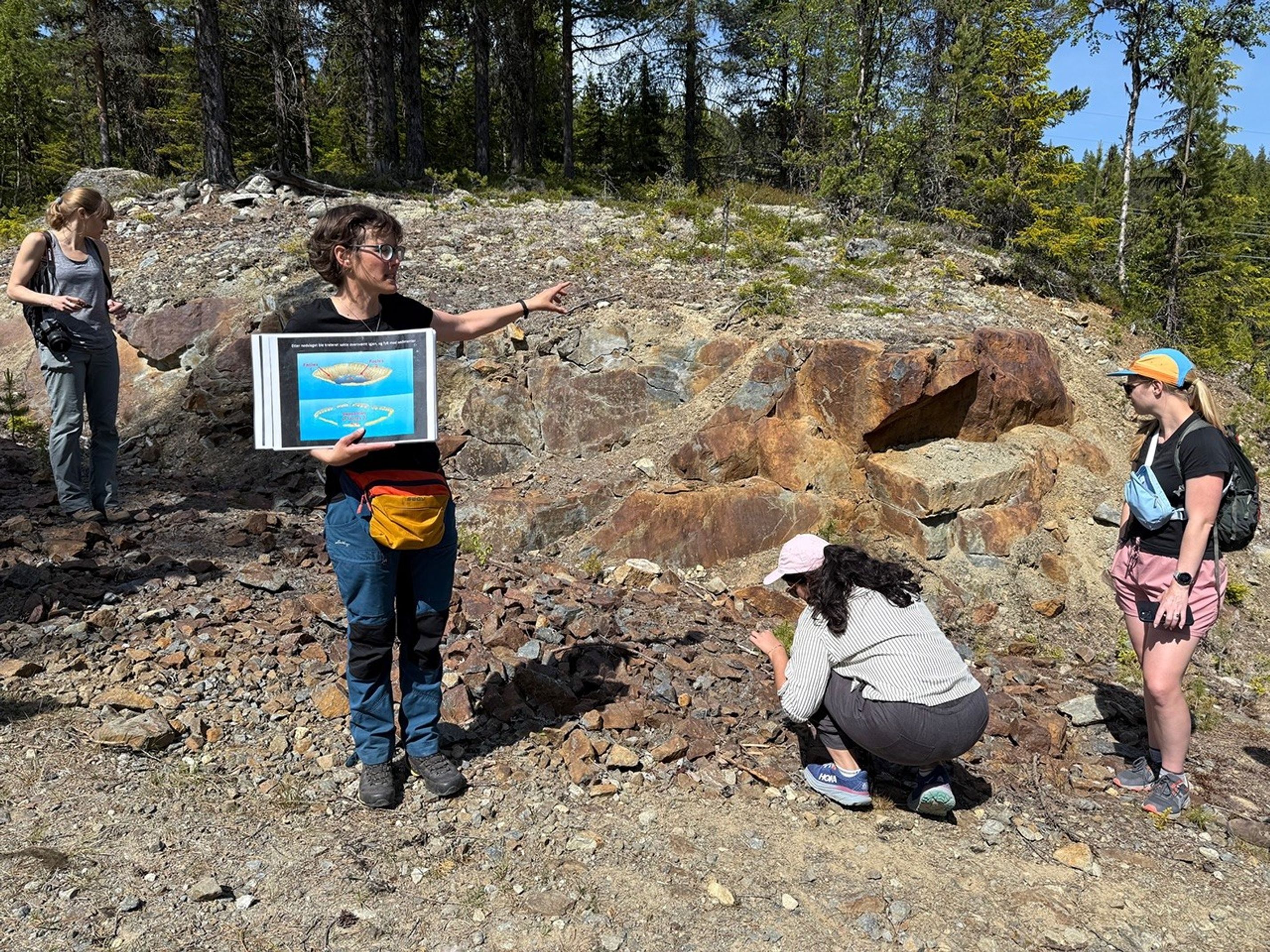Curiosity is currently sitting in front of a steep outcrop that shows some interesting geologic relationships between rocks in the Vera Rubin Ridge.
View of our workspace
Geology Science Theme Group Leader Prof. Chris House kicked off our planning today by playing a rousing rendition of "Also sprach Zarathustra" over the phone line. Hearing the theme song to the famous movie 2001: A Space Odyssey was the perfect start to sol 2001 planning and inspired us to chose two new target names that were as close to A Space Odyssey as we could get: "Boddam" ((David) Bowman) and "Kirkcudbright" ((Stanley) Kubrick).
Curiosity is currently sitting in front of a steep outcrop that shows some interesting geologic relationships between rocks in the Vera Rubin Ridge. We acquired some great images of these rocks in yestersol's plan, so today we were focused on understanding the properties of the rocks at our feet. In the first sol of the plan, sol 2001, we will be collecting MAHLI images of a target named "Apin," and doing DRT, MAHLI, and APXS on a target named "Brora."
The second sol, sol 2002, will focus on remote sensing, with ChemCam observations on targets named Boddam, "Sgurr of Eigg," and Kirkcudbright. The ChemCam observations will be accompanied by Mastcam documentation images. We will also be taking a multispectral observation of the DRT targets from tosol (Brora) and yestersol (Sgurr of Eigg), some multispectral images of the landscape in front of us, and some additional color images of the vertical rocks in front of the rover to complement the data we collected yestersol. We'll top off the science block with a dust devil movie and dust devil survey. We'll stay up after dark on sol 2002 to collect additional nighttime MAHLI images of Appin and Brora.
On sol 2003 we will have a bunch of dedicated environmental science measurements, including a tau to measure the dust in the atmosphere, a Navcam 360 sky survey, a Navcam zenith and suprahorizon movies, and a crater rim extinction image. We'll squeeze in another ChemCam RMI mosaic of some distant features in Mt. Sharp. Sol 2003 will finish with an ~50 m drive towards an area where we see some of the strongest spectral signatures of hematite on the ridge in orbital data. We'll take a standard set of post-drive images over the weekend to set us up to characterize this location in the sol 2004 plan. It will be very exciting to see the exact rocks that are the source of the orbital signature which helped us realize the importance of Vera Rubin Ridge over five years ago!
Written by Abigail Fraeman, Planetary Geologist at NASA's Jet Propulsion Laboratory
































